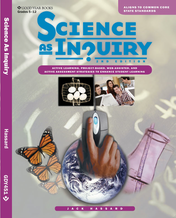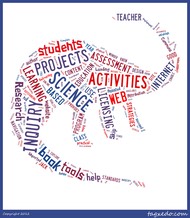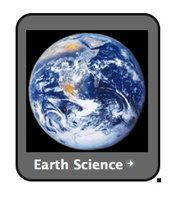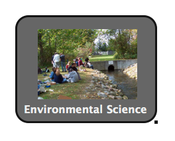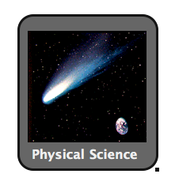31 Earth, Environmental, Life & Physical Science Activities for Your Science Courses
Note: You'll Need a Copy of the Text or IBook of Science as Inquiry to Access These Activities
Constructivism in the Bag

Constructivism in the Bag: Here are bags of science materials used by teachers to design Earth, Environmental, Life or Physical Science activities.
The science activities that are included in Science as Inquiry were designed using a constructivist model of learning that was used with thousands of teachers and graduate students in an instructional design activity entitled "Constructivism in the Bag."
Constructivism in the Bag is a play on words in which teachers in these staff development seminars, and graduate students in advanced teacher education courses designed constructivist and inquiry-based science activities based on science materials given to them in a small plastic bag. Using a constructivist template, each team designed a sequence of activities based on the constructivist learning cycle shown here. Four stages of instruction include: Invitation, Exploration, Explanation, and Taking Action.
Invitation. (Invite student ideas.) Describe how you will find out about students’ prior knowledge, ideas, and beliefs about the concepts in your sequence. • Provocative Questions • Interview Questions • EEEPs • Interesting Challenges • Discrepant Events• Demonstrations • T-charts • Concept Maps
Exploration. (Students explore phenomena through focused activity.) Describe at least one activity that youwill use to assist your students in exploring the fundamental concept(s). • Inquiry • Data Interpretation • Writing to Learn • Asking Questions • Hands-on • Constructing Explanations • Observation• Communicating Ideas • Data Collection • Cooperative Groups
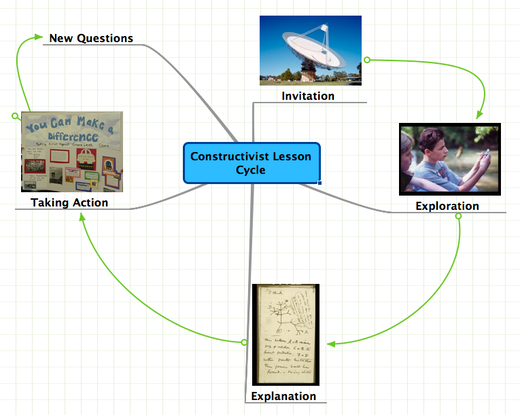
All of the science activities have been designed using this 4-Stage Constructivist Lesson Cycle
Explanation. (Help students propose and compare ideas.) Describe how the students will have the opportu-nity to hear differing views to talk aloud about their ideas to test ideas against the “the scientist’s” ideas. • Small-Group Discussion • Journal/Log Writing • Debating Alternative Ideas • Active Reading • Large-Group Discussion • Collaborative Group Questioning • Displays of Concepts • Explaining Ideas • Constructing Models • Defending Models
Taking Action. (Students apply their knowledge.) Describe at least one activity that will assist students intaking personal and/or social action on issues related to the content of the concepts, or to assist them inapplying the concepts to new situations. • Designing a long term research project • Sharing knowledge • Writing letters • Journal/log writing • Making posters about the topic • Concept maps • Hands-on activities • Seeking answers to their own questions
